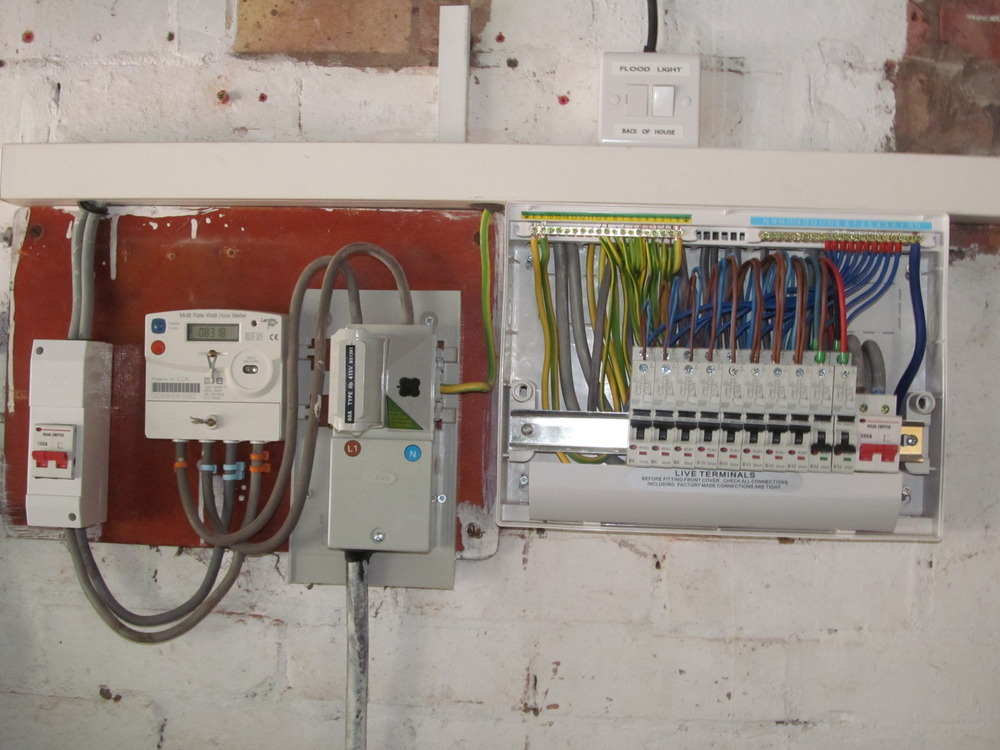NewHomeowner
Member
Hello everyone - I've been on her before and got some useful replies to questions, so I hope you can help me again...
I've passed my BS7671 and have done quite a few jobs, including upgrading a CU under supervision, but I'm lacking experience in a couple of areas.
Here's my question -
A customer had asked me to provide power to a new property. When I visited the site, the supply company hadn't yet installed the meter (which was to be mounted externally in an appropriate IP rated enclose. The customer asked if once they had done this that I could fit a CU and supply to the property (a hardstanding). I said I could do this in theory - ....IP rated CU fitted close to meter - routing an SWA cable, buried at appropriate depth to inside of the hardstanding to an internal CU and from there it's pretty straightforward - lighting, sockets only, etc..
BUT ... I asked that they ask the supply company to fit an isolator switch (presumably 80A - 100A) to the meter when they came to their install.
I haven't been back to the site since, but am due to go later this week. I've come across and worked with only one type of isolator before - A 'digital' style type where the supply is cut off by turning a slot clockwise with a flathead screwdriver - and this allowed me to work perfectly well on that installation, but isn't there also a DP type 'main switch' isolator - like a big switch? Is this the case, and can I expect this to also totally cut off the mains supply without the DNO having to be called out again to pull the main fuse? (I won't do this under any circumstances).
I'm asking because I'll have to install new tails from the isolator to the new CU and I want to be perfectly sure of my safety - that the isolator turned OFF really means off. I'm content to test this with my Kewtech, but wanted to hear the views of you experienced guys and girls.
Thank You.
I've passed my BS7671 and have done quite a few jobs, including upgrading a CU under supervision, but I'm lacking experience in a couple of areas.
Here's my question -
A customer had asked me to provide power to a new property. When I visited the site, the supply company hadn't yet installed the meter (which was to be mounted externally in an appropriate IP rated enclose. The customer asked if once they had done this that I could fit a CU and supply to the property (a hardstanding). I said I could do this in theory - ....IP rated CU fitted close to meter - routing an SWA cable, buried at appropriate depth to inside of the hardstanding to an internal CU and from there it's pretty straightforward - lighting, sockets only, etc..
BUT ... I asked that they ask the supply company to fit an isolator switch (presumably 80A - 100A) to the meter when they came to their install.
I haven't been back to the site since, but am due to go later this week. I've come across and worked with only one type of isolator before - A 'digital' style type where the supply is cut off by turning a slot clockwise with a flathead screwdriver - and this allowed me to work perfectly well on that installation, but isn't there also a DP type 'main switch' isolator - like a big switch? Is this the case, and can I expect this to also totally cut off the mains supply without the DNO having to be called out again to pull the main fuse? (I won't do this under any circumstances).
I'm asking because I'll have to install new tails from the isolator to the new CU and I want to be perfectly sure of my safety - that the isolator turned OFF really means off. I'm content to test this with my Kewtech, but wanted to hear the views of you experienced guys and girls.
Thank You.
































































